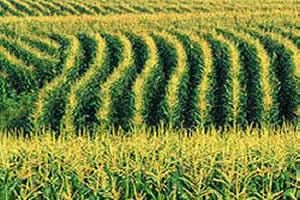Sand dams could be the answer to water woes in drought
Published on by Water Network Research, Official research team of The Water Network in Case Studies
 Rural parts of Zimbabwe in drought prone areas are the most seriously affected by a lack of clean drinking water for both humans and livestock.
Rural parts of Zimbabwe in drought prone areas are the most seriously affected by a lack of clean drinking water for both humans and livestock.
Lack of water also threatens the food and nutrition security of local communities in drought prone districts.
In these parts of the country, women walk miles every day to look for water and if they find it, the water is usually contaminated and polluted.
In most cases, water scarcity is causing conflict, stress and competition between communities for the dwindling resource.
All this has compelled non-governmental organisations, Government, funding partners and local communities to join hands to solve their water problems facing people in drought prone districts using the simple but highly effective technology of sand dams.
Recently, Practical Action, an international NGO, launched a US$1,9 million project in Plumtree called the smallholder women farmers achieving sustainable livelihoods and food security through agro-ecology, solar gardens and natural resources management.
The project shortened to Planting for Progress Project (P4P) will benefit more than 2 640 households in Bulilima and Gwanda districts through water and energy projects that aim to provide them with cheaper and reliable sources of water to improve crop productivity, food security and better adaptation to climate change.
One of the major activity of the project will include the construction of sand dams in selected areas in the two districts.
Zibanayi Kisimisi, a technical advisor for Practical Action said they were moving to introduce sand dams as a low cost innovation technology that could help empower rural communities in Gwanda and Bulilima district to gain access to clean water for improved food security, health and income.
“Rainfall patterns are changing and in this dry land region, the rains can be intense over a short period of time,” he said.
“Because the land is so dry, when rain does fall the bulk of water is lost to downstream rivers. Capturing this water using sand dams could help trap water which could be useful to improve livelihoods.
It’s a better and effective way for local communities to adapt to climate change.”
The project funded by UKAid with Practical Action as the implementing partner, seeks to help local communities to survive droughts, enhance food security and improve livelihoods through improved access to reliable energy sources.
Through the installation of solar systems to power irrigation gardens and abstraction of water from sand dams, local communities will make significant savings on energy costs while at the same time promoting a cleaner environment.
Sand dams, consist of a concrete embankment built across seasonal streams that flow during the rainy season and run dry during the dry season.
When seasonal rains fall, water collects behind the dam underneath the sand on streams and rivers.
The sand acts like a sponge which filters the water that can be harnessed for up to several months after the rains have fallen through sand water abstraction methods or by simply digging a hole in the sand.
Water from sand dams is accessed by digging up holes and through installation of infiltration galleries that drain into shallow wells, where water is then extracted with either a solar pump, hand pump, or submersible electric pumps.
Water experts say sand dams provide a sustainable solution for water – scarce regions in the country which have seen many smallholder farmers relying on food aid and losing cattle to drought.
Sand dams which are relatively easier to build and maintain can survive for many years providing water to local communities.
There are particularly beneficial to low – income, disadvantaged households and women who have to walk several kilometres to fetch water.
Media
Taxonomy
- Source Separation
- Resource Management
- Water Resources
- Dams
- Water Resource Management